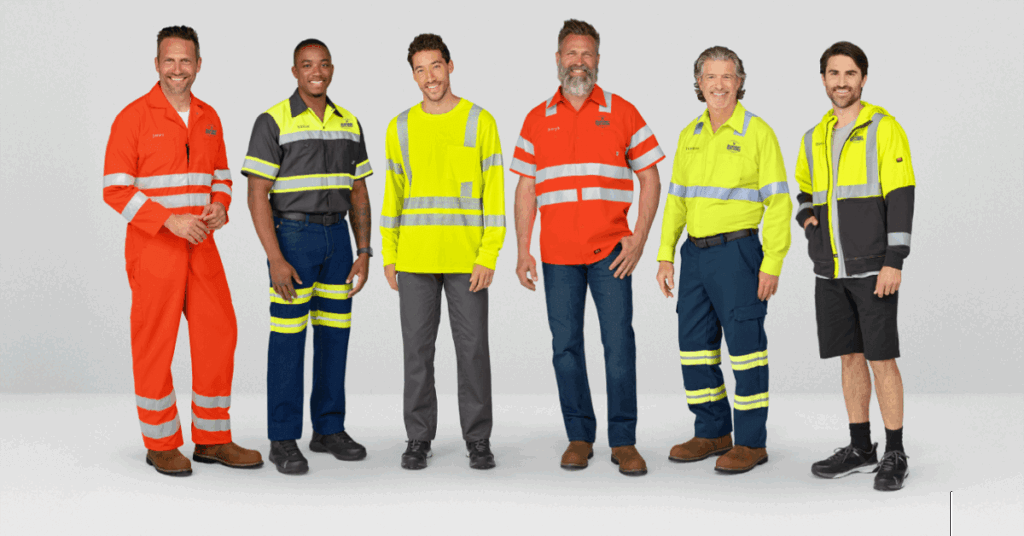Understanding ANSI 107 Standards for Winter Hi-Vis Apparel

Protecting your outdoor workers during cooler temperatures requires more than just adding a reflective vest over a winter coat. This guide explains why standard Hi-Vis gear often falls short in cold weather and how to help ensure your winter uniforms meet the ANSI/ISEA 107 standard.
We’ll break down the standard into two key parts—Type (the where of the job) and Class (the how visible of the gear)—so you can confidently provide uniforms that safeguard against visibility hazards and cold stress. The right garments must do both: keep workers seen and keep them safe from the cold, all while supporting movement and durability on the job.
The Double Danger of Winter Work
For teams in roadway, utility, or logistics roles, winter work brings two significant safety risks:
1. Reduced Visibility:
Diminished daylight and adverse weather conditions, such as fog, snow, and rain, increase the likelihood of vehicle-related accidents. Hi-Vis apparel becomes critical.
2. Cold Stress Hazards:
Prolonged exposure to low temperatures can lead to serious health issues, including hypothermia, frostbite, and trench foot. Moisture only makes things worse.
Your winter uniform program must address both dangers—enhancing visibility and maintaining warmth and dryness.
What Is ANSI/ISEA 107?
The national standard for high-visibility safety apparel, ANSI/ISEA 107, specifies the minimum amount of fluorescent and retroreflective material required on garments. Compliance isn’t optional—it’s the benchmark for worker safety and legal protection.
Every certified garment will include a label with a Type and Class, usually noted beside a diagram of the item. Understanding these is the first step to ensuring your team’s winter gear is compliant.
ANSI “Type”: Where the Garment Is Worn
The Type defines the work environment where the garment is intended to be used:
| Type | Stands For | Where It’s Worn | Examples |
| R | Roadway | Public roads or traffic zones | Highway maintenance crews, DOT |
| P | Public Safety | Emergency response environments | Police, EMS, Fire/Rescue |
| O | Off-Road | Controlled or non-traffic zones | Warehouses, Parking Attendants |
For winter outerwear worn in traffic zones, always select Type R for compliance.
ANSI “Class”: How Visible the Garment Is
The Class refers to the level of visibility required, determined by the garment’s total square inches of reflective and fluorescent material.
1. Class 2 – Enhanced Visibility:
Used in moderate-risk environments (e.g., roadside work under 50 mph). Often includes Hi-Vis vests or lightweight jackets.
2. Class 3 – Maximum Visibility:
Required for high-risk conditions, including fast traffic, low light, and heavy equipment zones. Typically includes insulated parkas or an ensemble of Class 2 + Class E pants.
Winter Tip: To meet Class 3, the gear must include more total Hi-Vis area—either in one outer layer or a combination of jacket and pants.
Winter Compliance Checklist: Beyond Visibility
True ANSI 107 compliance in winter means accounting for weather protection as well as visibility:
✅ Insulated, Waterproof Outerwear
Cold-weather jackets must provide insulation and resist water. A Hi-Vis vest is not enough when freezing temperatures and snow are present.
✅ Layering Strategy
- Base Layer: Moisture-wicking thermal to keep sweat away.
- Middle Layer: Insulating fleece or quilted vest.
- Outer Layer: ANSI-compliant waterproof and wind-resistant parka.
✅ Proper Wear & Maintenance
- The ANSI garment must be worn as the outermost layer, fully zipped, with nothing covering reflective strips.
- Replace any damaged or faded items to maintain compliance.
Logistics & Compliance Made Simple
Outfitting a distributed team with the correct Type R, Class 3, insulated uniforms across multiple locations is a logistics challenge—unless you’re using a managed uniform program.
Unitec’s proprietary uniform distribution system, The Proximity System™, automates ordering, ensures role-based compliance, and delivers fully customized, ANSI-certified winter gear directly to your teams. From branding to bulk delivery and inventory visibility, we remove the manual burden, allowing you to focus on safety and performance.
Your Next Step:
Explore how our Managed Uniform Programs can improve winter safety, eliminate compliance gaps, and streamline distribution—without the spreadsheets.
Disclaimer:
This blog post is intended to provide general guidance and helpful information related to ANSI/ISEA 107 standards and winter uniform compliance. It is not an exhaustive resource and does not guarantee compliance with any specific regulatory or safety requirements. For questions about how to ensure your organization’s uniform program meets applicable standards, we encourage you to contact the Unitec team directly. We’re here to support your efforts in making informed, compliant decisions.
